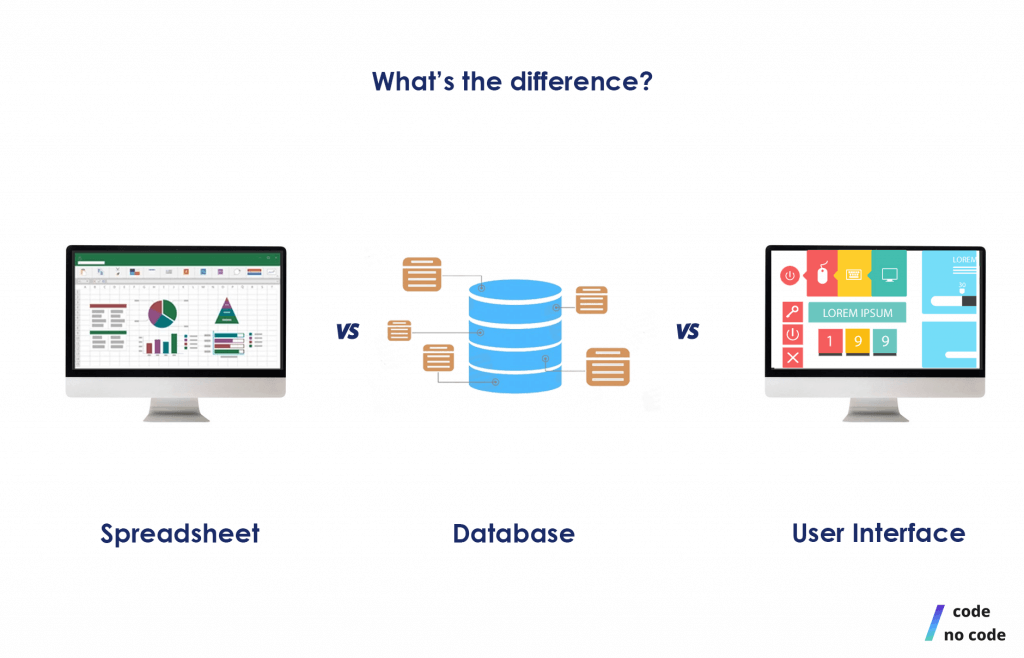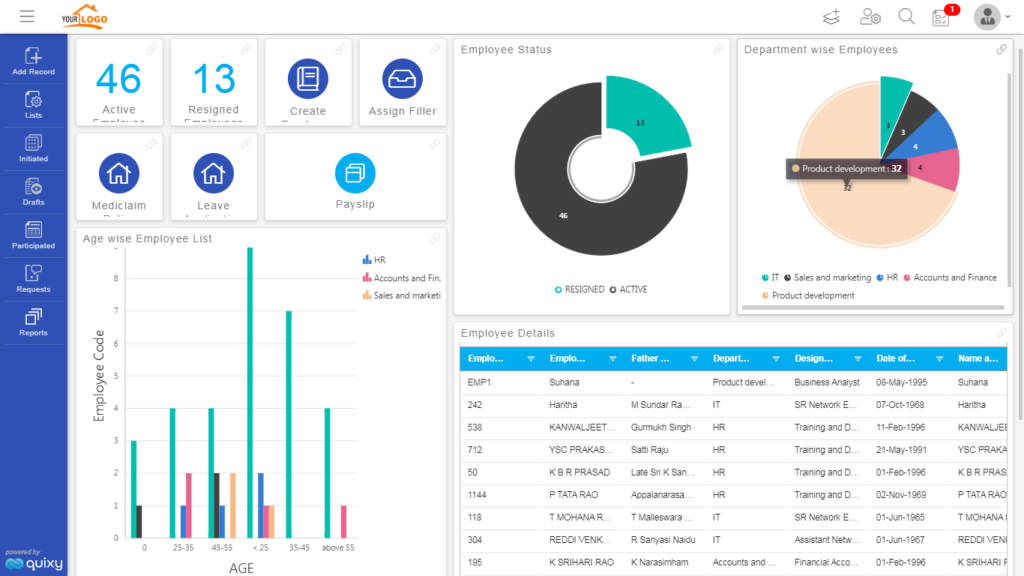Open the Power of No-Code for Open System Data Source Production
Open the Power of No-Code for Open System Data Source Production
Blog Article
Checking Out the Advantages of Scalable Data Sources That Require No Coding Abilities for Effective Information Administration Solutions
The emergence of scalable data sources that eliminate the need for coding skills provides a transformative opportunity for companies seeking effective data monitoring services. By enabling non-technical users to harness the power of data through user-friendly interfaces, these systems boost availability and foster collaboration throughout diverse teams. Furthermore, their cost-effectiveness and adaptability to advancing company demands can dramatically improve functional processes. As we consider the ramifications of such advancements, it ends up being essential to check out exactly how they can improve the landscape of information administration and drive lasting growth in an affordable setting.
Enhanced Ease Of Access for Individuals
Improved ease of access for individuals is an important element of scalable databases, guaranteeing that data administration systems are user-friendly and intuitive. In a period where data-driven choices are extremely important, availability permits a wider variety of customers, consisting of those without considerable technological know-how, to involve with database systems efficiently. This democratization of data gain access to helps with improved collaboration across departments, equipping employees to extract insights and make notified choices.
Easy to use interfaces, such as aesthetic information and drag-and-drop features depiction, streamline complex information communications. These enhancements minimize the discovering curve connected with conventional data source administration, enabling customers to concentrate on leveraging data instead of coming to grips with technical intricacies. Furthermore, scalable data sources commonly incorporate customizable control panels and real-time analytics, giving individuals with immediate insights tailored to their specific needs.

Cost-Effectiveness and Resource Savings
Effective data management not only depends upon availability yet likewise on cost-effectiveness and source cost savings. Scalable databases designed for users without coding abilities dramatically minimize monetary burdens commonly related to standard data source monitoring systems. By eliminating the demand for specialized programs knowledge, organizations can allot their resources much more successfully, focusing funds on core organization activities instead than extensive training or employing experienced workers.
Additionally, these databases often use cloud-based options, which better reduce expenses associated with hardware and maintenance. Organizations can scale their data source services according to their requirements, preventing the costs incurred from over-provisioning resources. This adaptability indicates companies can adapt to changing demands without sustaining unnecessary expenses, leading to considerable long-term financial savings.
Additionally, user-friendly interfaces improve data entrance and administration procedures, lowering the moment invested in management jobs. This performance converts right into labor cost financial savings, permitting groups to concentrate on critical initiatives instead of routine maintenance. Overall, adopting scalable databases that call for no coding abilities cultivates a much more economical method to data management, enabling companies to optimize their sources while preserving high levels of functional performance.
Improved Partnership Across Teams

In addition, scalable data sources promote smooth communication among employee. With easy to use user interfaces that call for no coding abilities, employees can easily produce, customize, and share records or control panels tailored to their specific requirements. This have a peek at this website democratization of data encourages non-technical users to contribute insights, boosting the joint setting.
Additionally, these databases support concurrent gain access to, enabling numerous users to work with the exact same dataset simultaneously. This function boosts productivity, as teams can engage in joint information evaluation without the threat of variation control issues. The ability to leave notes or remarks straight within the database further promotes dialogue and clears up information interpretations.
Streamlined Data Administration Processes
In today's data-driven atmosphere, organizations acknowledge the necessity of structured information administration processes to take full advantage of performance and precision. By leveraging scalable databases that need no coding skills, companies can simplify their data handling and reduce the intricacies commonly related to traditional data source systems. This access empowers non-technical users to engage straight with information, facilitating quicker decision-making and reducing dependence on specialized IT workers.
Structured information administration processes enhance process by automating regular tasks such as data access, recognition, and coverage. Automated data integration guarantees that details from numerous sources is aggregated seamlessly, getting rid of silos and fostering a linked view of critical organization metrics (no-code). User-friendly user interfaces permit personnel to control information easily, enabling them to create insights that drive tactical campaigns without the need for extensive training.
This effectiveness not just accelerates operational procedures yet also lessens the possibility for human error, guaranteeing that information continues to be reliable and accurate. Eventually, structured information management procedures through scalable data sources lead to boosted productivity, enabling companies to concentrate on core tasks while guaranteeing that their information administration techniques are effective and efficient.
Scalability for Growing Companies

For increasing ventures, the capacity to scale up or down is crucial. A scalable data source can take care of an influx of information produced from new customers, products, or services, guaranteeing that business procedures stay continuous. Moreover, these data sources supply the ability to manage peak lots successfully, which is necessary during durations of fast growth or seasonal spikes.
Furthermore, many scalable data source options are developed with user-friendly interfaces that call for no coding skills, encouraging non-technical personnel to manage information efficiently (no-code). This democratization of data monitoring permits organizations to allocate sources tactically and lower reliance on specialized IT workers
Eventually, adopting a scalable data source not just enhances operational effectiveness but additionally promotes an environment useful source where businesses can innovate and advance without the constraints of standard data source systems. This adaptability placements companies for lasting success in today's competitive landscape.
Verdict
To conclude, scalable data sources that call for no coding abilities offer considerable benefits for efficient information management. These systems improve ease of access for non-technical customers, lower functional prices, and promote partnership throughout teams. By improving data administration procedures and providing scalability for expanding organizations, such services allow companies to adapt to transforming needs efficiently. Eventually, the fostering of these straightforward data sources cultivates innovation and positions businesses for long-lasting success in a vibrant environment.
Improved availability for users is a vital aspect of scalable data sources, making certain that data management systems are instinctive and straightforward.Straightforward interfaces, such as drag-and-drop features and aesthetic data depiction, simplify complex information interactions. On the whole, embracing scalable data sources that need no coding skills promotes a more cost-efficient technique to data administration, enabling companies to maximize their sources while maintaining high degrees of operational effectiveness.
By leveraging scalable data sources that need no coding abilities, services can streamline their data handling and lower the complexities generally linked with conventional data source systems - no-code.Streamlined data management procedures enhance process by automating routine tasks such as information entry, recognition, and coverage
Report this page